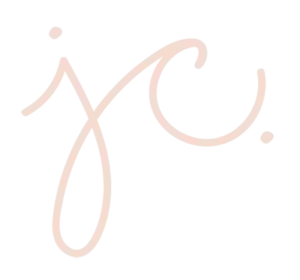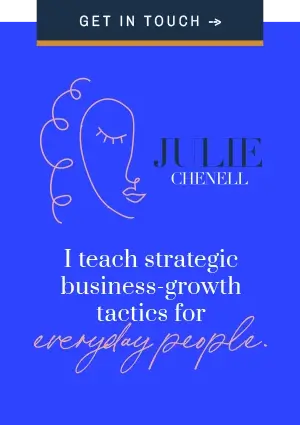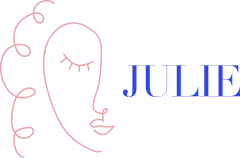Challenges and webinars are two of the most effective ways to build buzz and anticipation in a launch.
But before you put in all the hard work to build one, let’s look at the number one problem marketers face when creating this type of content.
They teach too much.
The issue of course is fueled by an over reaction to a trend to NOT TEACH AT ALL, which was commonplace a few years ago (and you can find lots of pockets of people still bloating their content with a lot of nonsense and fluff).
So in an attempt to not be that way, we’ve seen a rise of INCREDIBLY chalked- full-with-juicy-goodness webinars and challenges that give away all kinds of knowledge and strategy and tactics, and leave the participant feeling like they don’t need the program at all.
Where’s the middle ground? You want your lead to be impressed, happy they came and attended, and most importantly, you want them to buy your offer.
Finding the right balance isn’t easy, and if you’re hearing things like:
- Omg this was amazing and I can’t wait to implement it all
- This was as good as a paid course…
- I don’t even need your [program name] because of how much I learned!
These are signs you’re teaching too much in your free content, and not positioning your lead to buy.
Let’s take a look at a typical 5 day challenge setup.
For the purposes of this example, we’re going to pretend we are a book coach. We teach people how to write books, launch them, sell them, etc.
Our product is a $2000 program that takes a student through the book writing process in 60 days, and includes help with the outline and the writing process.
Before you build a challenge that leads into this offer, the creator must ask themselves an important question:
“What problem must my student feel deeply in order to be motivated to buy my offer?”
In this example, my student might buy my program if:
- They have a ton of ideas and no idea where to start or which one to go with
- They have a half written draft they hate and are ready to throw away
- They’ve gotten an outline done but are masters at procrastination and haven’t written anything yet
In each of these scenarios, I can see the 2 main problems clearly…the problem of lack of clarity and lack of direction.
The more foggy and directionless they feel, the more pain they are in during the writing process, the more effort and resources they will spend to get themselves out of that spot.
But it doesn’t stop there, because in order to alleviate the pain, they could simply…quit.
So what other problem must they be acutely aware of in order to take action?
The consequences of NOT writing a book at all.
Sometimes it’s difficult to feel a consequence like this because it requires the person to understand opportunity cost.
Opportunity cost is about the loss of potential gain from OTHER alternatives when one alternative is being chosen. In this case, the choice to quit writing removes them from feeling the gain of what sticking it out and publishing would produce.
Let’s ideate for a minute. What are the benefits to writing a book?
- You get asked on more podcasts and stages leading to a bigger audience
- You get instant credibility leading to more opportunities
- You get new leads from people who’ve found and read your book leading to more sales
- You get new sales & revenue from selling the book which gives you more revenue
- You make more connections with experts you might have interviewed for the book and that can lead to potential collaborations
- You get increased confidence in yourself as an expert in your field, which leads to taking bigger risks
After this exercise, we’ve got three primary problems our student MUST feel urgently and deeply in order to take action.
- Lack of clarity (what to write)
- Lack of direction (how to write it and get it done)
- The consequence of giving up (many pain points there)
You could keep going with this and identify more and more problems if you wish. It’s never a bad exercise to really get intimately acquainted with the pain of your customer.
Now it’s time to build a challenge for the aspiring writer. If we pause here for a moment and pretend we didn’t do this problem exercise, a creator might put together a challenge like the following:
- Day 1: How to pick your best book idea
- Day 2: Creating your outline
- Day 3: Getting in the habit of writing
- Day 4: What to do when you get stuck
- Day 5: Pitch (Inside our Writing Your Book in 60 Days Program)
The creator would probably struggle a bit trying to figure out what to teach for free and what to keep “secret” for the course.
The creator might settle on a big picture overview and outline and leave out a bunch of details.
Or the creator might teach snippets from the course and try to “over-deliver” in order to get the potential student excited to see more.
Does this sound familiar? It’s so incredibly common. Don’t feel bad if this has happened to you.
Another way creators build challenges is to focus on the stuff the student needs to do BEFORE writing. So a challenge might look like this:
- Day 1: What are you an expert in?
- Day 2: The book idea incubator
- Day 3: Testing your book idea
- Day 4: Building the outline
- Day 5: Pitch (Inside our Writing Your Book in 60 Days Program)
In this example, it’s a bit easier (and more effective) because even if you “give away the farm” you will have solved one problem…in this case the idea of what to write, but you will not have solved AT ALL the idea of how to write it.
But is this really the best we’ve got for our challenge?
Let’s go back to the problems we unearthed in our exercise above. Most creators undervalue their diagnostic skills.
If you have a pain in your stomach and you go straight to a surgeon, that surgeon will open you up and look around, try to figure out the problem, and then fix it? No! Of course not.
Instead, you will be diagnosed with a specific problem – in this example – appendicitis. That piece of information is CRITICAL to both you and the surgeon.
The same goes for our student.
When we are able to accurately diagnose their problem, and help them SEE the problem accurately, then we don’t have to hardly sell at all, because they will be convinced themselves.
Diagnostic teaching uses a lot of stories, tangible before/after examples, assessments and reflections.
Let’s build a challenge that’s more diagnostic than prescriptive. We can do this by building a challenge AROUND the problems. Assign a problem to each day.
- Day 1: I want the student to FEEL and understand the consequence of not writing a book.
- Day 2: I want the student to FEEL and understand they are lacking clarity
- Day 3: I want the student to FEEL and understand they are lacking direction
Starting with Day 1, we could do a story based teaching about the benefits of writing a book. We could talk about the scarcity of time, about resistance to doing hard things, about imposter syndrome and fear.
As a tangible activity, you could have them write their fears and overcome them, write out their goals and vision, create an accountability plan, etc.
On Day 2, we want them to walk away realizing that clarity makes EVERYTHING easier. Use an example of an author who was unclear vs. one who was clear. Showcase the two outlines side by side. Examples and stories create more aha! moments than bullet points. They should be able to quickly see how one outline makes SO MUCH more sense than the other.
As a tangible activity, give a clarity assessment worksheet to help them rank how clear or unclear they are on their topic. The goal is for them to recognize where they are lacking that clarity and have an aha! that this is why they haven’t taken action yet.
On Day 3, it’s time to help them feel the pain of lack of direction. Set up the challenge about the tale of three authors. Maybe one hasn’t started at all, one is halfway through and blocked, and one is finished and hates it and it’s collecting dust in Google drive. In this way, they can start to identify who they are in this story.
You could show what happens to books that don’t have direction vs. ones that do. Compare and contrast units sold on directionless books vs. bestsellers.
As a tangible activity, do a “how I will know my book has direction” reflection. Ask them what their expectations are around the book writing process.
Now you still have two days left. You could go back to the problem exercise and find another one, or you could start to identify the path forward (which leads right into the sale).
You could make Days 4 + 5 both more sales pitch days as you use the course program as the roadmap or guide to solving these pressing issues.
The final challenge outline might look like this:
- Day 1: Your Book Publishing Dream
- Day 2: Getting Crystal Clear On Your Perfect Book Idea
- Day 3: Three Roadblocks Every Author Faces
- Day 4: Setting Your Writing Process Up For Success
(this will start to introduce the program) - Day 5: Get Your Book Done In 60 Days
(Inside our Writing Your Book in 60 Days Program- full pitch)
We’ve now done this process with a challenge, but it works exactly the same for a webinar. The steps are simple to say, but take a bit more work to do.
- Identify the problems your potential customer faces
- Identify what they need to FEEL in order to take action
- Teach from a diagnostic perspective vs. prescriptive (save that for your paid program)
You can use this framework for other types of content too. Emails, social media content, presentations, podcasts, and more.
Try it out next time and resist the fear that diagnosing a problem isn’t enough “teaching”.
Ask the guy who got the appendicitis diagnosis before surgery. He’d agree.
xx Julie
P.S. I do these challenge/webinar hotseats with all my 1:1 clients. If you’re making $100k or more a year and would like to work with me personally, you can apply at digitalinsidersmastermind.com









Luv your work Julie xx
Luv your work Julie xx